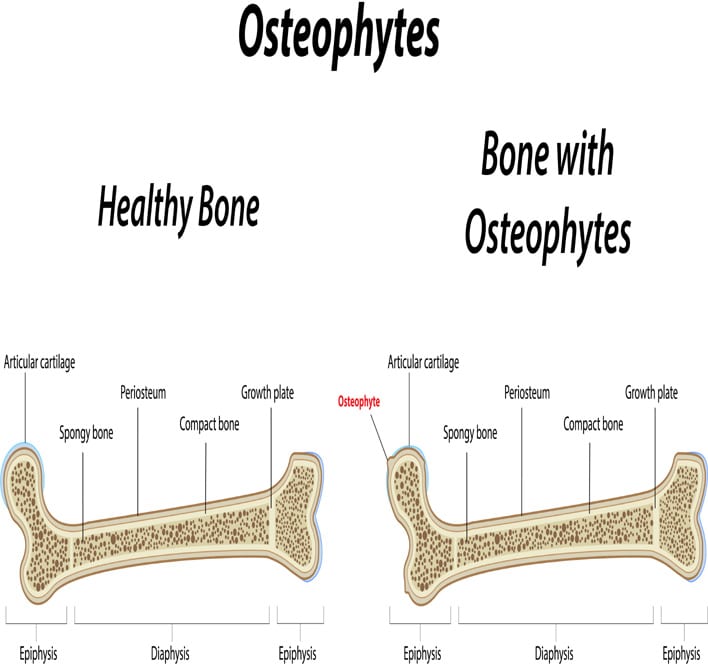Osteophytes in the thoracic spine are a common yet potentially concerning medical issue that many patients may face. Understanding what osteophytes in the thoracic spine mean can help you effectively navigate your health. After all, most patients have likely never heard of osteophytes, so it is natural to worry about what having them means for your health and long-term mobility.
At NJ Spine & Orthopedic, our team of experts is dedicated to providing comprehensive care for spinal conditions, including osteophytes in the thoracic spine. We understand the impact that this condition can have on your overall well-being, and we are committed to helping you find relief and improve your quality of life.
What Are Osteophytes?
Osteophytes, also known as bone spurs, are spiny projections that form along the edges of bones. When osteophytes develop in the thoracic spine, they are often the result of degenerative changes in the vertebrae. These bony growths can form on the edges of the vertebrae or the discs between them and may be a response to the natural wear and tear that occurs over time. While osteophytes themselves may not cause symptoms, they can potentially lead to problems if they impinge on nearby nerves or the spinal cord.
Having osteophytes in your thoracic spine doesn’t necessarily mean that you will experience symptoms or require treatment. In some cases, individuals with bone spurs may not have any noticeable issues. However, the potential for symptoms or complications means it’s crucial to work closely with your healthcare provider to monitor your condition and address any symptoms that do arise.
Signs of Osteophytes in Your Thoracic Spine
Osteophytes in your thoracic spine can cause stiffness, pain, and discomfort, and they may also lead to nerve compression or spinal cord compression if they become large enough. If you are experiencing symptoms such as back pain, stiffness, tingling, or numbness in your arms or chest, it is important to seek medical attention to determine if osteophytes are the cause. Your healthcare provider can perform a physical examination and order imaging tests, such as X-rays or MRIs, to diagnose the presence of osteophytes in your thoracic spine.
Your healthcare provider will work with you to develop a treatment plan that may include physical therapy, pain management, and, in some cases, surgical intervention, to alleviate the symptoms and prevent further complications.
Treatment for Osteophytes in Your Thoracic Spine
Your healthcare provider will work with you to develop a personalized treatment plan that may include a combination of medication, physical therapy, and lifestyle modifications. Non-steroidal anti-inflammatory drugs (NSAIDs) may be prescribed to help reduce inflammation and relieve pain. Physical therapy can help improve your flexibility and strengthen the muscles supporting your spine, which can reduce the pressure on the affected area.
Your healthcare provider may also recommend modifying your daily activities and posture to minimize strain on your thoracic spine. In some cases, minimally invasive procedures or surgery may be necessary to remove or address the osteophytes.
Schedule a Consultation With an Orthopedic Doctor at NJ Spine & Orthopedic Today
If you’ve been diagnosed with osteophytes in your thoracic spine, it’s important to understand what this means for your overall health. Depending on the severity of the bone spurs and any resulting symptoms, your healthcare provider may recommend a variety of treatment options. These may include medications to manage pain and inflammation, physical therapy to improve spinal mobility and strength, or, in some cases, surgery to remove the bone spurs.
If you are experiencing symptoms related to osteophytes in your thoracic spine, we strongly encourage you to consult with a healthcare professional for a thorough evaluation and individualized recommendations. Call NJ Spine & Orthopedic at (866) 553-0612 or use our contact form.

